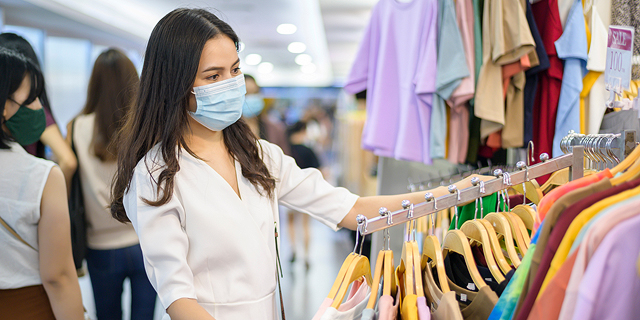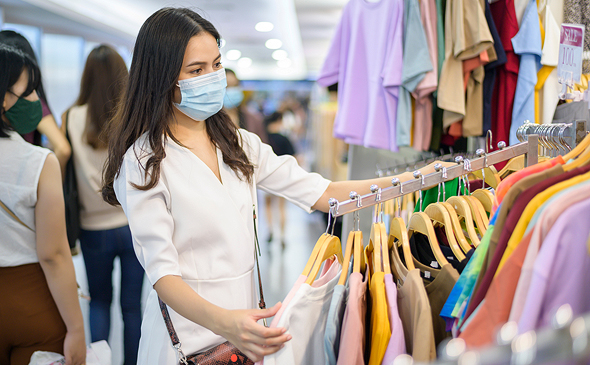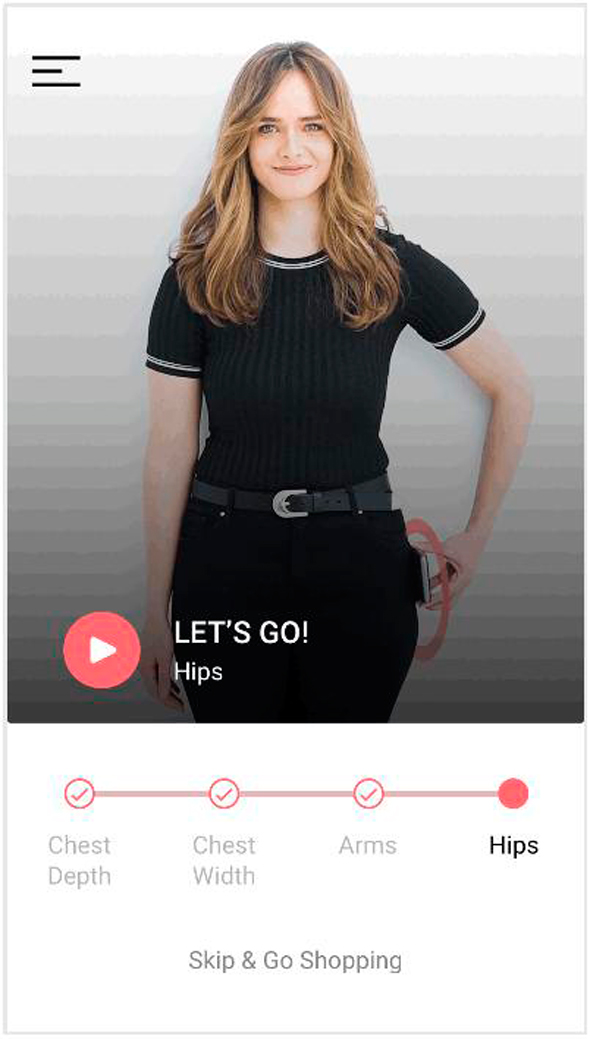
Interview
MySize aiming to become the next-generation personal shopper
The fash-tech company has created an algorithm that helps shoppers locate their correct size when making purchases online, and also has rolled out a few other surprises to help streamline shopping in-stores
Yafit Ovadia | 09:20, 17.12.21
Many consumers struggle with finding their correct clothing size online. All that has become more complicated by discrepancies in sizing charts between different apparel companies. Israeli fash-tech company MySize aims to solve that problem. “People have trouble when trying to buy clothing online. Sizing changes between brands, especially with newer or unfamiliar brands which customers haven’t yet purchased before,” Ronen Luzon, CEO of MySize, an Israeli fash-tech company told CTech in an interview.
Issues with sizing drive retailers to receive a high level of returns, he noted. “Online penetration - even for large retailers - was not high. After the pandemic hit, many people transitioned to making purchases online. But many small and medium-sized retailers, with nearly 100% of their businesses only being available online, needed a better solution to this problem,” he explained. “People mainly return items because they don’t fit right, or consumers don't know their correct size. Consumers also have a low-confidence level when purchasing online, since they can’t touch, try on, or see the item in person.” But when stores shut their doors, and moved online during the lockdowns of 2020, online purchases started gaining traction. Even well-known companies like Nike and Adidas, managed to increase their online sales by 35%-40%.
No longer one-size fits all
Despite the growing number of online shoppers, digital sizing tools for consumers haven’t changed much. And that’s where MySize entered the picture. Its first product is a sizing tool that can be used on mobile phones via an app. The MySize ID app has a sensor that can accurately measure distance. A consumer simply waves the phone around an area of their body to get an accurate reading. In order to protect consumer privacy, the app doesn’t take photos. “It acts like a ruler, and helps you form a better picture of the right size you need,” Luzon said, adding that the camera-less solution is especially ideal in order to maintain consumer privacy when trying to outfit children with their correct size, or women who are purchasing lingerie.
While MySize relies on these measurements it collects anonymously through the app, it also has several in-person centers in Turkey and Russia that measure people to get a better feel for what sizes they actually need, whether they’re children or adults, or need special-sizing like plus, tall, and petite. The company has built a large database by combing universities, schools, and shopping malls, and inviting people to measure themselves in small tents. “We make sure to keep all the data anonymous. Our algorithm then takes that data, and asks a person questions such as what gender, height, and weight they are, and then supplies a recommendation of what size they should buy.”
So far, MySize has partnered with American denim giant Levi’s, Swedish men’s clothing brand Gant, Nautica, and Trutex, which supplies schoolchildren’s uniforms in the U.K. “Kids are constantly growing, so collaborating with MySize is a plus for parents, who can measure their children easily using our app, and then update their children’s profile every six months to get a better size recommendation as they grow.”
Fash-tech is growing
Interest in fash-tech is growing, and many companies are popping up in this sphere. While MySize’s main area of expertise is in the fash-tech market, it also offers additional sizing solutions for logistics - namely packaging and shipping items, so that companies can send appropriate sized pickup vehicles for transporting items. Its next offering is targeting the DIY space. If consumers want to buy a curtain or bed linens, then they need to get an accurate reading of their window or bed frame. The app functions similarly to measure household items.
As for the company’s financial standing, Luzon added: “MySize is an odd animal. We immediately went public in 2014 on the Tel Aviv Stock Exchange (TASE) and later on the Nasdaq, but we’ve raised money since day one.” Currently, MySize is being financed by U.S. investor HC Wainwright Bank, with whom it recently completed a $12 million funding round.
Mirror Mirror on the wall
Luzon doesn’t think that online purchases will completely replace in-store shopping experiences. However, solutions like MySize can create new options to optimize consumer shopping. “MySize is collecting data on online consumers that can assist them when they visit a store. It can alert the retailer what size they are, whether the size of any item they’d be interested in is in stock, and improve their shopping experience,” he said. Consumers can also use the app to scan the barcodes of garments and shoes, and based on their previous sizing, the algorithm can alert them as to what size they need.
The company is also working on a new product, which it terms “Magic Mirror.” Shoppers can try on items in front of a “smart” mirror that can provide sizing (and even clothing) recommendations, send alerts to salespeople to bring those items to the dressing room, and function as a sort of personal shopper. “Magic Mirror” can access the consumer’s online MySize profile, complete with all their measurements and body type. Retailers, he noted, want to cut down on the amount of items going back and forth into fitting rooms, as well as the time customers spend debating whether or not to buy a certain item. “It’s a win on both ends; we just want to make shopping easier,” he said.


